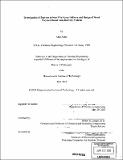| dc.contributor.advisor | Robert S. Langer. | en_US |
| dc.contributor.author | Akinc, Akin, 1976- | en_US |
| dc.contributor.other | Massachusetts Institute of Technology. Dept. of Chemical Engineering. | en_US |
| dc.date.accessioned | 2006-03-24T16:07:09Z | |
| dc.date.available | 2006-03-24T16:07:09Z | |
| dc.date.copyright | 2003 | en_US |
| dc.date.issued | 2003 | en_US |
| dc.identifier.uri | http://hdl.handle.net/1721.1/29607 | |
| dc.description | Thesis (Ph. D.)--Massachusetts Institute of Technology, Dept. of Chemical Engineering, 2003. | en_US |
| dc.description | Includes bibliographical references. | en_US |
| dc.description.abstract | The safe and effective delivery of therapeutic genes is the most significant challenge facing gene therapy today. Viral vectors remain the dominant approach for addressing the delivery problem; however, concerns regarding the safety of viral vectors have resulted in an increasing interest in non-viral vectors. Non-viral vectors offer the promise of improved safety, but because they have yet to match the functional sophistication of viral vectors, their transfection efficiencies have lagged those of viral vectors. The rational design of functional non-viral vectors requires a thorough understanding of both the cell's sophisticated machinery and the vector material's functional properties. We have developed a novel, flow cytometry based tool for investigating both the cellular uptake and lysosomal trafficking of non-viral vectors, two important barriers to efficient gene transfer. Using this and other tools we investigated the gene transfer properties of polyethylenimine (PEI), a highly effective non-viral vector material. We demonstrated that the transfection efficiency of this polymer is due to its ability to avoid lysosomal degradation as a result of its buffering capacity, providing quantitative validation of the proton sponge hypothesis. By studying the gene transfer properties of a library of polymeric vectors, we were able to elucidate new vector structure-function relationships. We also investigated the combined impact of non-structural factors-such as polymer molecular weight, polymer chain end-group, and polymer/DNA ratio-on gene transfer. The findings of these studies have lead to the development of non-viral vectors with transfection efficiencies surpassing those of PEI and Lipofectamine 2000, two of the best commercially available non-viral vectors. | en_US |
| dc.description.statementofresponsibility | by Akin Akinc. | en_US |
| dc.format.extent | 126 leaves | en_US |
| dc.format.extent | 5776206 bytes | |
| dc.format.extent | 10469504 bytes | |
| dc.format.mimetype | application/pdf | |
| dc.format.mimetype | application/pdf | |
| dc.language.iso | eng | en_US |
| dc.publisher | Massachusetts Institute of Technology | en_US |
| dc.rights | M.I.T. theses are protected by copyright. They may be viewed from this source for any purpose, but reproduction or distribution in any format is prohibited without written permission. See provided URL for inquiries about permission. | en_US |
| dc.rights.uri | http://dspace.mit.edu/handle/1721.1/7582 | |
| dc.subject | Chemical Engineering. | en_US |
| dc.title | Investigation of barriers to non-viral gene delivery and design of novel polymer-based gene delivery systems | en_US |
| dc.type | Thesis | en_US |
| dc.description.degree | Ph.D. | en_US |
| dc.contributor.department | Massachusetts Institute of Technology. Department of Chemical Engineering | |
| dc.identifier.oclc | 53088769 | en_US |
